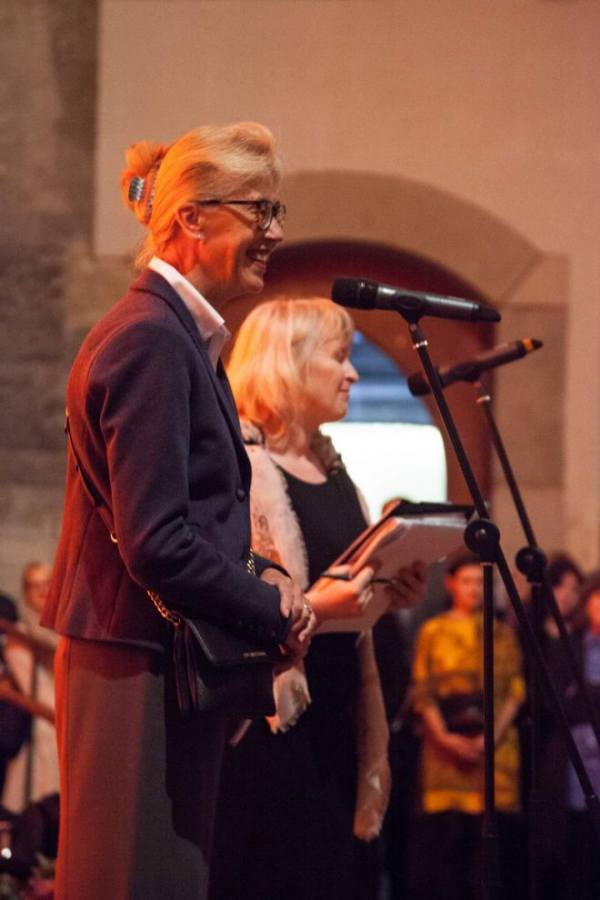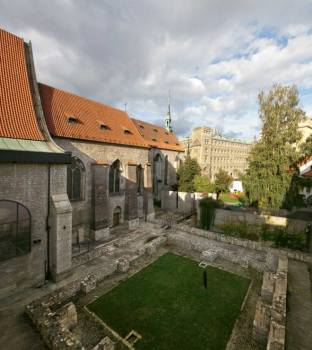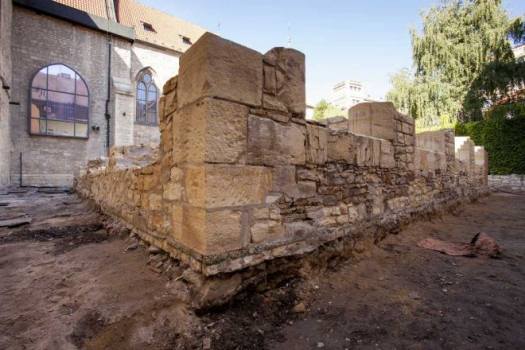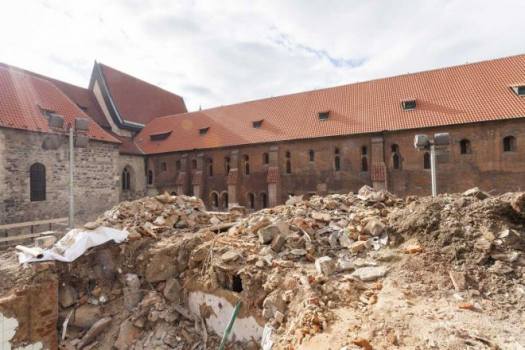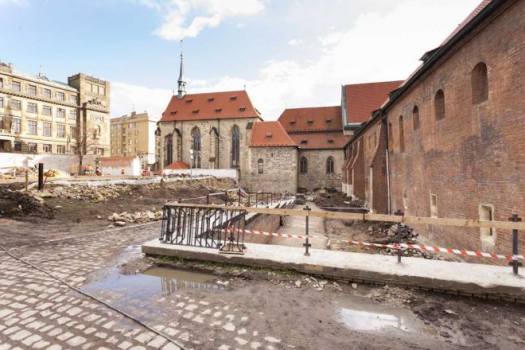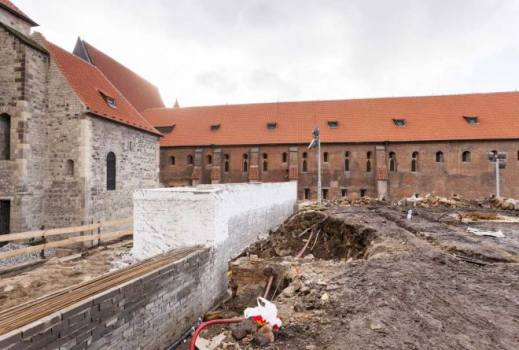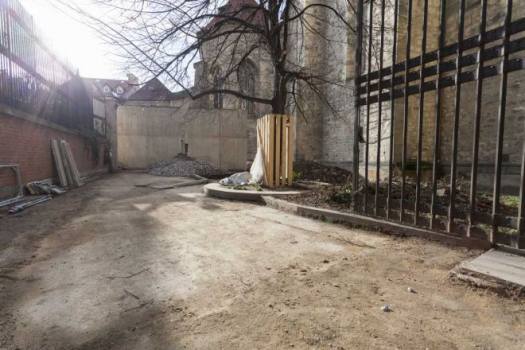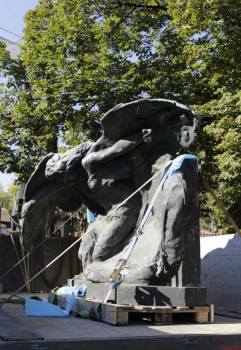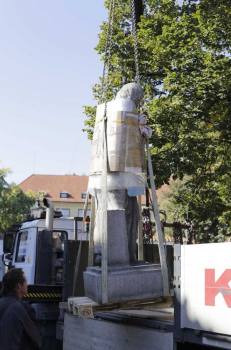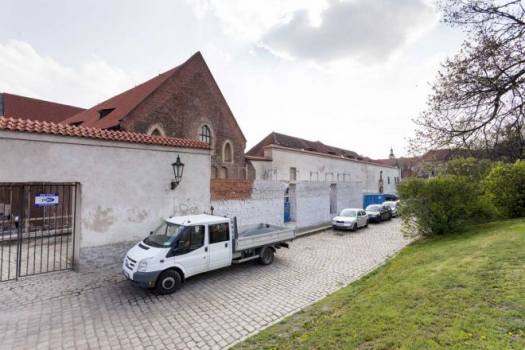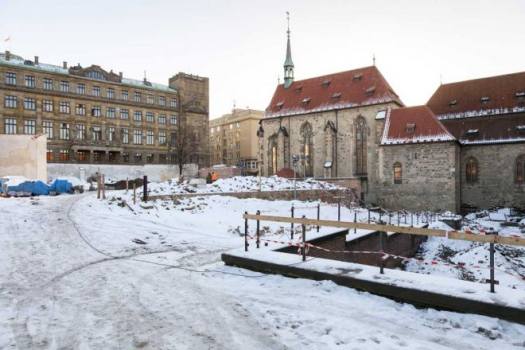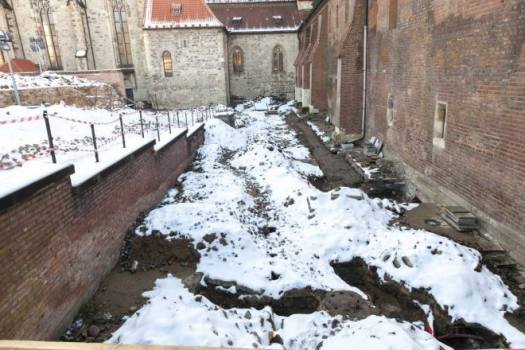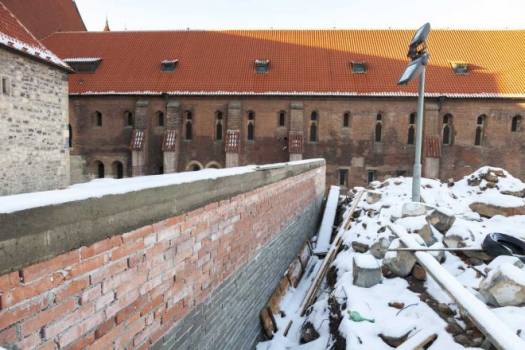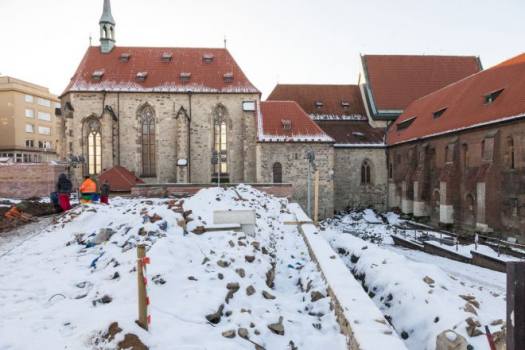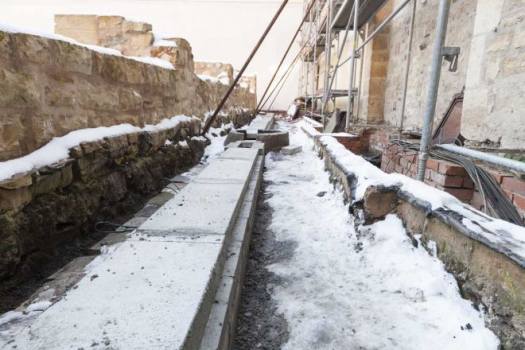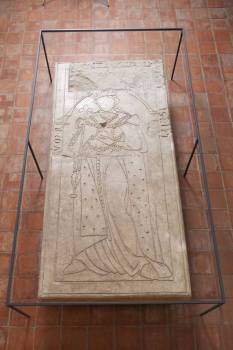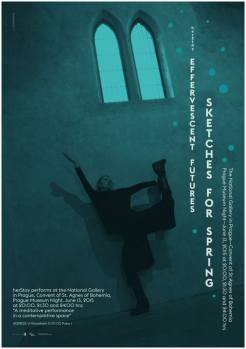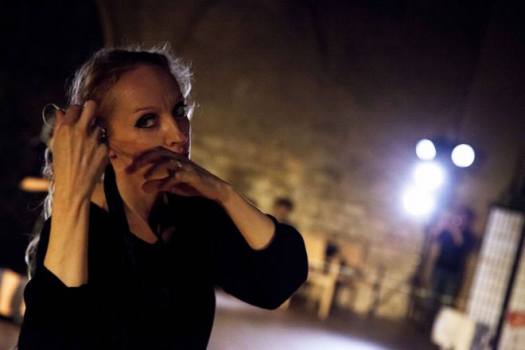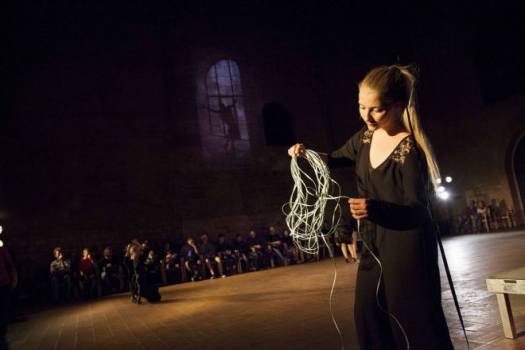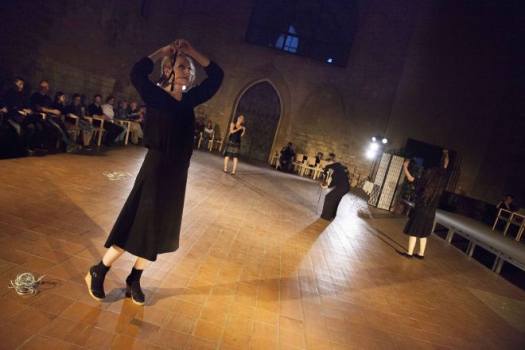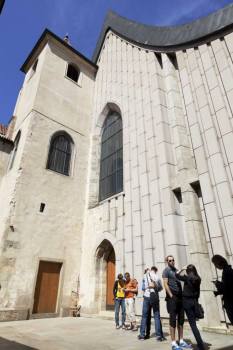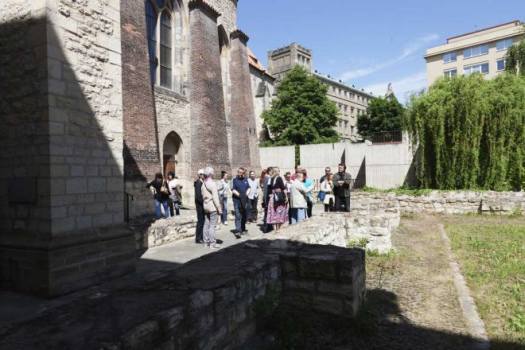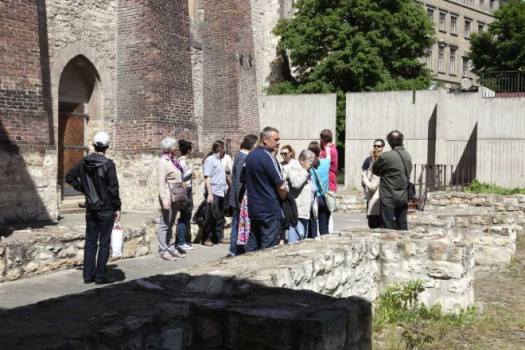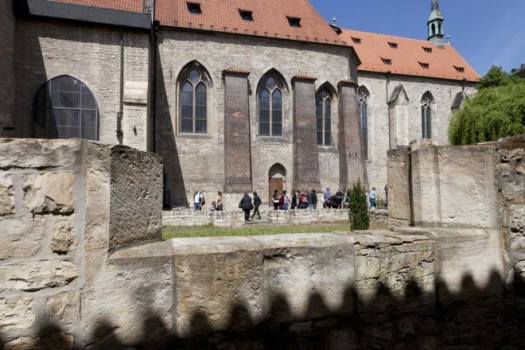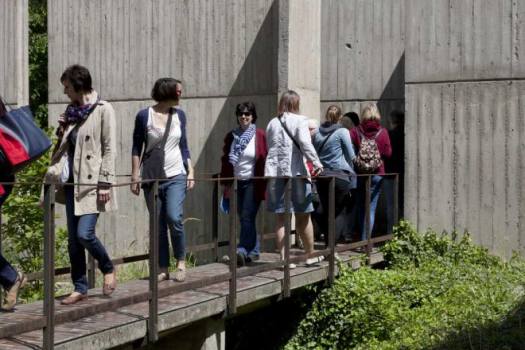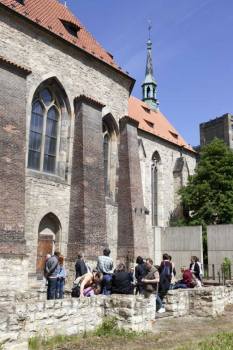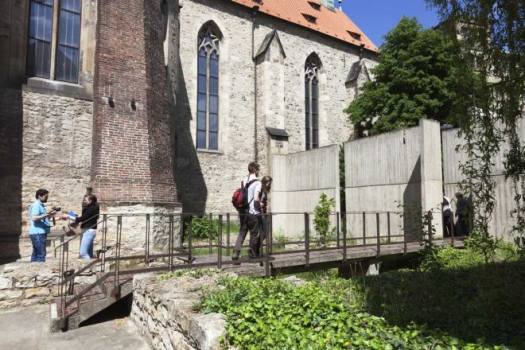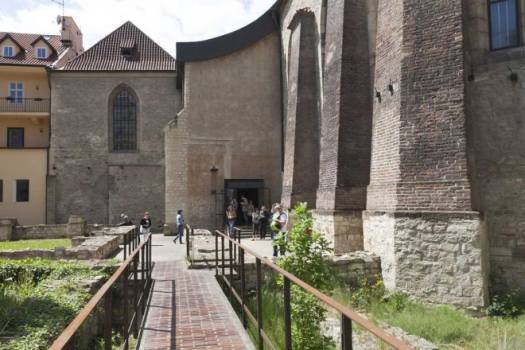Supported by grant from Iceland, Liechtenstein and Norway
Project No.: EHP-CZ06-OV-1-042-2014; Program CZ 06 – Kulturní dědictví a současné umění, Programová oblast PA 16-3 – Zachování a revitalizace kulturního a přírodního dědictví-památky zahradní architektury, for more information about the project see: http://www.eeagrants.cz/cs/programy/ehp-fondy-2009-2014/cz06-kultura/schvalene-projekty/revitalizace-klastera-sv-anezky-ceske-hi-1621
Project implementation time: January 1, 2015 – October 31, 2016
Total project costs: 36 964 056 CZK, of which 29 571 244 CZK is the subsidy from EEA and Norwegian funding
Project summary to download here.
The Convent of St Agnes of Bohemia ranks among the most important Gothic cultural monuments in Prague. In 2014 the intention of opening of the area to the public and revitalization of the outdoor areas of the convent was selected for funding by EEA Grants and Norway Grants. Since July 2015 the landscape gardening, construction and restoration treatments will be realized, so that in early fall of 2016 the gardens could be opened to the public. The project includes the conservation of the remains of the former Friars Minor monastery, which will also be opened to the public. The convent’s Lapidarium will house a new exhibition on the history of the convent. A system of info-panels will introduce visitors to the life and work of St. Agnes of Bohemia and the medieval concept of the double monastery. The newly adapted convent gardens will house sculptures by contemporary artists. The gardens of St. Agnes’s Convent will be accessible through the gates from Dvořákovo Nábřeží Street; the space around this entrance will be newly adapted and equipped with street furniture.
As the main recipient of the grant, the National Gallery Prague has collaborated with partners from both abroad and the Czech Republic: Norsk institutt for kulturminneforskning, Stiftelsen herStay Fundational and the Czech Technical University in Prague.
1—1 / 5
Project Implementation Timeline
In early 2015, a building contractor was chosen and since the summer of that year, archaeological survey, conservation works and landscaping have been under way. New exhibitions are in the preparation stages. The construction work, some of which is noticeable from outside of the premises, has been continuously documented.
1—1 / 11
In connection with the construction work, a preventive
archaeological survey was carried out in 2015. It took place primarily in two
parts of the heritage compound: the site of the former monastery of the Friars
Minor and the so-called enclosure garden, situated on the north side of the
monastery premises. Details on the results of the survey can be found here (in
czech).
The changes also affected the garden near the northern gate. Sculptures that were temporarily deposited there were moved to the National Gallery vaults. Over the course of the summer and autumn 2016, they will be replaced with a new outdoor exhibition. The gardens of the Convent of St. Agnes will house works by F. Bílek, M. Gabriel, P. Kolíbal, K. Malich, S. Milkov, P. Opočenský, J. Róna, F. Skála, Č. Suška, A. Veselý.
1—1 / 4
Because of the mild weather, modifications to the so-called Convent Garden and the cloister of the Friars Minor continued throughout the winter. The conservation work on the extant outside masonry is almost finished. Landscaping is planned for spring 2016. New trees will be planted, new climbing plants will liven up some of the inner walls, and the grassy areas will be rearranged. Following its renovation, the Friars Minor cloister will house an outdoor exhibition of selected artefacts from the Lapidarium. During tourist season, this exhibition will be accessible from the convent churches. There will be a new barrier-free access to the churches. Other areas in the monastery gardens will feature sculptures by important contemporary artists, new outdoor furniture, and an info-system.
In spring 2016, the building modifications will wrap up and landscaping will begin. Construction will continue in the area near Na Františku Street, where the previously planned outer wall will be finished and the space around the entrance to the National Gallery will be rearranged. When all the work is complete, the gallery will be accessible not only through the main entrance from U Milosrdných Street but also through the two gates facing the embankment.
In spring 2016, the building modifications will wrap up and landscaping will begin. Construction will continue in the area near Na Františku Street, where the previously planned outer wall will be finished and the space around the entrance to the National Gallery will be rearranged. When all the work is complete, the gallery will be accessible not only through the main entrance from U Milosrdných Street but also through the two gates facing the embankment.
1—1 / 7
The grant has also allowed for the restoration of artworks from the National Gallery. The collection of restored artworks, primarily architectural sculptures and tomb sculptures, will be displayed in both the interior and exterior gallery of the convent’s Lapidarium. The fragment of the tomb of Kunigunda of Hungary was restored in spring 2016, and it currently sits in the apse of the Church of the Holy Saviour, in the place of the original Přemyslid necropolis.
1—1 / 2
During the 2015 Prague Museum Night, the Convent of St. Agnes was used as a venue for a performance by the Norwegian dancer and choreographer, Monica Herstadt and her company herStay. Three performances took place throughout the night.
1—1 / 5
The public has been regularly updated on the National Gallery’s plans. In May 2015, the gallery introduced the project during the Open House festival, when a part of the former Friars Minor monastery was opened to the public. For more about the event see:
1—1 / 8
The modifications to the areas outside the convent’s premises, funded from the Norwegian funds, were also discussed at a National Gallery press conference launching a new publication about the convent’s founder, St. Agnes of Bohemia, by Helena Soukupová. For Czech Radio coverage of the event, see here.
In 2016, the revitalization the Convent of St. Agnes of Bohemia has been under discussion in relation to the planned revitalization of the Dvořákovo nábřeží according to the conception of IPR Praha (Prague Institute of Planning and Development). The National Gallery took part in two round-table debates and presented the results of these debates to the public.
For more about this see: http://www.iprpraha.cz/dvorakovonabrezi
In the spring, construction and landscaping continued in the cloister of the Friars Minor and in the garden behind the churches. At the beginning of the summer, “construction” was happening in the garden near the northern wall as well. In just a few days, František Skála built a structure for children. However, it will certainly charm the adults, too.
When the construction work was completed in the areas assigned for the new sculptural gallery, the installation of sculptures could begin. In September, the sculptures were gradually installed with the help of their authors or lenders. Most of the objects required complicated manipulation and so the work often continued at night in order to minimize traffic restrictions in the monastery's surroundings. Sculptures were also taken away from St. Agnes's monastery because the National Gallery lent some of the artefacts from its collections to gardens at the Prague Castle and the Zbraslav Castle. St. Wenceslaus by J. V. Myslbek was thus returned to Zbraslav and Josef Štursa's Victory will again adorn the Belveder at the Prague Castle.
When the construction work was completed in the areas assigned for the new sculptural gallery, the installation of sculptures could begin. In September, the sculptures were gradually installed with the help of their authors or lenders. Most of the objects required complicated manipulation and so the work often continued at night in order to minimize traffic restrictions in the monastery's surroundings. Sculptures were also taken away from St. Agnes's monastery because the National Gallery lent some of the artefacts from its collections to gardens at the Prague Castle and the Zbraslav Castle. St. Wenceslaus by J. V. Myslbek was thus returned to Zbraslav and Josef Štursa's Victory will again adorn the Belveder at the Prague Castle.


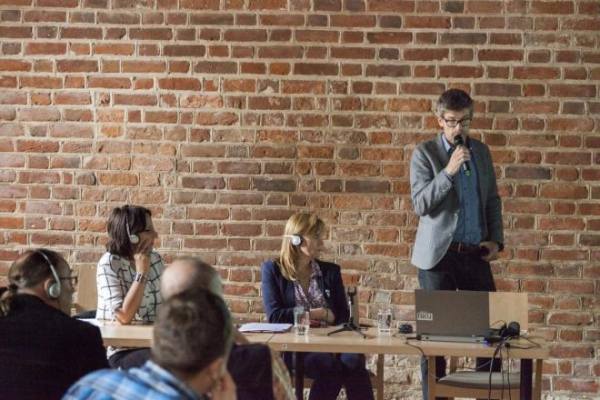
In September 2016, St. Agnes's monastery hosted a colloquium devoted to modern methods of heritage monument documentation in museological practice, held as part of the project “Revitalization of St. Agnes's Monastery.” More that thirty specialists and representatives of art-historical community took part in the colloquium; the presented papers raised lively discussions. The opening paper introduced the project “Revitalization of St. Agnes's Monastery,” followed by contributions by specialists from ČVUT and NIKU. The colloquium's program (to download here) along with annotations of the individual papers (to download here) and the press release available here.
The installation of the outdoor sculptural gallery was followed by the installation of exhibitions in the convent's interior. The long-term lapidarium exhibition was installed in the black kitchen and the refectory in the Poor Clares' convent, also continuing in the monastery's exterior spaces. The new self-guided tour with almost thirty info-panels gradually came alive, as did the interactive stations for children and the art studio. The newly renovated compound was opened to public on October 25, 2017. The opening was preceded by the press conference and guided tour. The information brochures are available here.
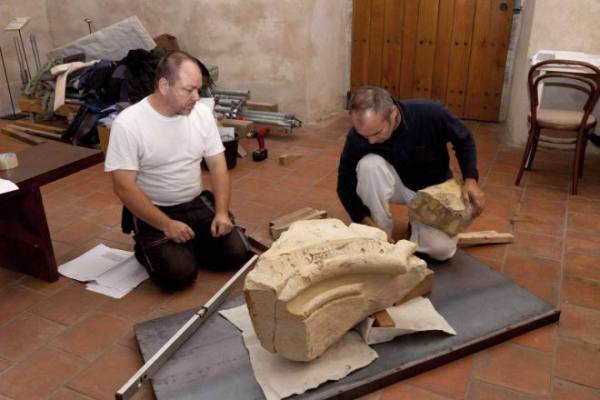
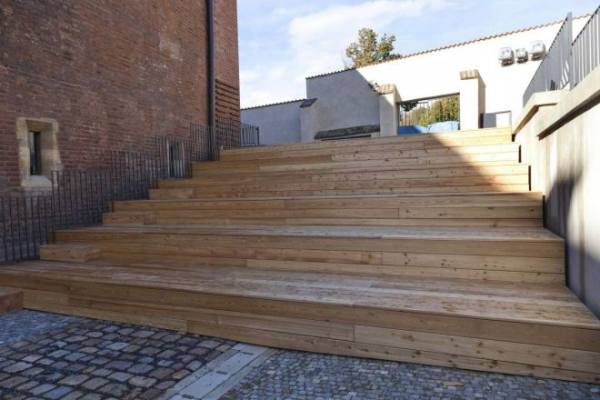

Numerous important guests, including the Norwegian ambassador, took part in the the gala opening entitled “Agnes Anew.” The evening was accompanied, among others, by the performance of Her Stay dance company. The opening of the gardens and new exhibitions in St. Agnes's monastery appeared in a number of media. Coverage by Czech Television and Czech Radio is available here:
Project summary to download here.







